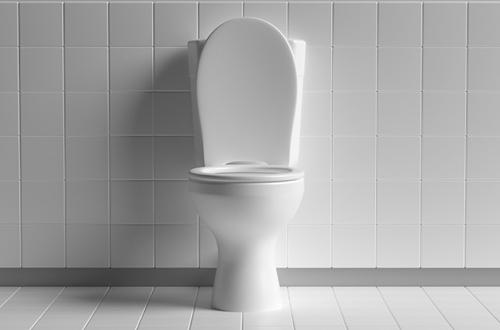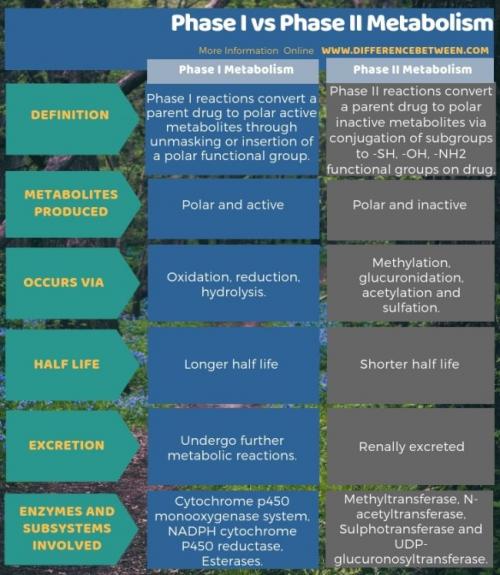Detox Phase 3 Kidney. Phase III
- Detox Phase 3 Kidney. Phase III
- Science of detoxification. How Can You Support Detox the Healthy Way?
- Which organ should You Detox first. What Is a Detox?
- Detoxification mechanism in human body. 2 Introduction
- Phase 1 detoxification. 1-я фаза детокса
- What Is Phase 3 Metabolism. Difference Between Phase I and Phase II Metabolism
- Stages of liver Detox. The liver's stages of detoxification
Detox Phase 3 Kidney. Phase III
Phase III refers to a highly concentrated anti-porter (transport) system of proteins in the body. There are many anti-porters being researched, particularly P-glycoprotein(16), an anti-porter in the small intestine that moves toxins from cells into the gut. Blood-brain protein is also located in the kidneys, blood brain barrier, and liver.(17) This transport system ensures movement of unwanted compounds out of the cell, and into detoxification organs.
A healthy diet and microbiome are key to the success of P-glycoprotein; gut inflammation leads to the production of endotoxins, specifically LPS, that can inhibit the activity of P-glycoprotein. If phase III is compromised, an accumulation of toxins within the cell occurs.(18) Errors in P-glycoprotein expression has been linked to Alzheimer disease and is suspected to play a role in stress management and inflammatory bowel disease.(19-21)
Due to these intricate connections between phase I, II, and III, inefficient detoxification in any of the three phases can be detrimental. We are beginning to test for genetic errors in detoxification and link impaired detoxification to a predisposition to certain diseases.
Clinically, early signs of poor detoxification are broad, including but not limited to: difficulty digesting fats, bad breath, acne, premenstrual cramping, hypoglycemia, environmental allergies, skin rashes, difficulty losing weight.
In response to the constant demand placed on our detoxification systems, living a life that consistently supports these three phases rather than focusing on detoxification sporadically through the year best serves us. There are many habits we can incorporate daily to support our hard-working detoxification pathways.
Science of detoxification. How Can You Support Detox the Healthy Way?
Even though you’ve developed a highly sophisticated system for regularly removing toxins, some things can gum up the works, such as a sluggish or inflamed liver, stagnant or low bile flow, irregular bowel movements , and clogged lymphatic channels. And while there are things you can do to energize the process in the short term, overall detoxing should not be considered something you do for a few days and move on, but rather a constant element in your overall approach to health .
In fact, most of the “detox” products you find on the market are the equivalent of a crash diet that’s designed to deliver rapid weight loss results. To achieve the effects, the products often rely on laxatives, Dr. Rawls says. And so, instead of actually addressing meaningful and lasting aspects of the three detox phases, the laxatives flush a buildup of “bad” bacteria that can occur from eating a high-carb, processed food diet and irregularity — but the relief is only temporary.

Although flushing your bowels can make you feel better briefly if you’ve not been regularly eliminating the junk, the effects are fleeting. What’s more, there’s little evidence that detox diets or fad products are effective , according to a review in the Journal of Human Nutrition and Dietetics .
So tune out the hype, and instead, use these more sound, effective, and systemic approaches that support your body’s natural detoxification every step of the way, every day.
Which organ should You Detox first. What Is a Detox?
The definition of a detox, or a “cleanse, is “a variety of ‘detoxification’ diets, regimens, and therapies — sometimes called ‘detoxes’ or ‘cleanses’ — have been suggested as ways to remove toxins from your body, lose weight or promote health.” Indeed, when trying to figure out how to lose weight fast , a detox can be a great first step.
A detox or cleanse can vary in time length, but it can range from a single day to several weeks. A longer detox than that time period is generally not recommended.
The goal of a detox is to remove unhealthy foreign substances, as well as harmful bacteria, yeasts and viruses, from your body to help you feel and operate better.
How do you know if you need a detox? Every person reacts differently to toxin exposure, plus there are various types of toxins, such as metals and mold, each having unique effects on the body. Some common signs that you may require detoxification can include:
- Unexplained fatigue
- Sluggishness, weakness, and lethargy
- Mood swings, anxiety, or depression symptoms
- Bloating and indigestion
- Getting sick more often
- Skin breakouts, redness and sensitivity
A “detox diet” may be considered an intense cleansing diet that consists of drinking specific concoctions for many days or weeks to clear out toxins and achieve weight loss. Be aware that the term “detox cleanse” can also be a marketing ploy used to shill expensive and overpriced products to health-conscious consumers.
Ideally, a detox is a healthy way to get back on track and help your body do exactly what it’s designed to do: clear out toxins and keep you in tip-top shape.
See, your body has a complex detox system built right in, and all of your organs work together to keep you feeling healthy. Your skin pushes out bacteria through the sweat, your kidneys filter through liters of blood and produce urine, your lungs expel carbon dioxide, your intestines extract nutrients from food to excrete waste products, and your liver clears out toxins from the body. (Learn about a kidney cleanse and a liver cleanse .)
Factors like chronic stress, unhealthy habits, physical inactivity and a diet high in ultra-processed foods can totally tank your body’s natural detox system, making it even harder to remove toxins from the bloodstream efficiently.
A body cleanse or detox diet that involves cutting out junk foods and increasing your intake of nutritious whole foods along with a few powerful detox drinks and foods can be an easy way to help your hit the reset button.
Best of all, unlike on other detox diets, this kind of natural cleanse won’t drain your energy levels or leave you feeling worn down. Instead, it can boost energy, restore motivation and help you feel your best.
Detoxification mechanism in human body. 2 Introduction
Detoxification ("detox") has broad connotations ranging from the spiritual to the scientific, and has been used to describe practices and protocols that embrace both complementary (fasting, colonic cleaning) and conventional (chelation or antitoxin therapy) schools of medical thought—as well as some that push the boundaries of scientific plausibility (such as ionic foot detoxification).
In the context of human biochemistry (and this protocol), detoxification can be described with much more precision; here it refers to a specific metabolic pathway, active throughout the human body, that processes unwanted chemicals for elimination. This pathway (which will be referred to as metabolic detoxification) involves a series of enzymatic reactions that neutralize and solubilize toxins, and transport them to secretory organs (like the liver or kidneys), so that they can be excreted from the body. This type of detoxification is sometimes called xenobiotic metabolism, because it is the primary mechanism for ridding the body of xenobiotics (foreign chemicals); however, detoxification reactions are frequently used to prepare unneeded endobiotics (endogenously-produced chemicals) for excretion from the body.
Excess hormones, vitamins, inflammatory molecules, and signaling compounds, amongst others, are typically eliminated from the body by the same enzymatic detoxification systems that protect the body from environmental toxins, or clear prescription drugs from circulation. Metabolic detoxification reactions, therefore, are not only important for protection from the environment , but central to homeostatic balance in the body.
This protocol describes nutritional approaches for general optimization of metabolic detoxification; it is designed to provide a foundation for proper function of this critical system. Specific health concerns may require supplementary detoxification "intervention" protocols (such as " Heavy Metal Detoxification " or " Alcohol: Reducing the Risks ").
Phase 1 detoxification. 1-я фаза детокса
Первая линия защиты от токсинов, в которой работают ферменты семейства цитохрома P450.
Они оберегают клетки от повреждений через:
- измельчение летучих токсичных веществ для их последующей утилизации,
- переход токсичных веществ в водорастворимую форму для вступления в фазу 2.
Фаза 1 запускается такими токсинами как кофеин, спиртные напитки, пары краски, стероиды, пестициды, снотворное, противозачаточные препараты и кортизон.
Поддержку 1-й фазы детокса осуществляют:
- Травы: расторопша, тмин, укроп.
- Цитрусы: мандарины, апельсины (но не грейпфрут - он отключает 1 фазу).
- Продукты с высоким содержанием витамина С (клубника, сладкий перец).
- Крестоцветные овощи: все виды капусты.
- Витамины: C и большинство вит-нов комплекса B.
- Липотропики: вещества, расщепляющие жиры в обмене веществ (цистеин, метионин, холин, инозитол).
- Микроэлементы: магний (Mg), железо (Fe).
Фаза 1 дает окисление и формирование свободных радикалов
В фазе 1 происходит окисление токсинов для их расщепления на метаболиты. Это приводит к появлению свободных радикалов. Они оказывают пагубное действие (и на ДНК - тоже), если не заставить их двигаться по путям детоксикации, чтобы покинуть организм.
What Is Phase 3 Metabolism. Difference Between Phase I and Phase II Metabolism
The key difference between phase I and phase II metabolism is that the phase I metabolism converts a parent drug to polar active metabolites while phase II metabolism converts a parent drug to polar inactive metabolites .
Metabolism (drug metabolism) is the anabolic and catabolic breakdown of drugs by living organisms. Hence, drug metabolism is an important aspect of living systems. It occurs through. Furthermore, drug metabolism is of three phases; Phase I (modification), Phase II (conjugation) and Phase III (further modification and excretion) and all three phases actively involve to detoxify and remove xenobiotics from the cells.
CONTENTS
What is Phase I Metabolism?
Phase I reactions convert a parent drug to polar active metabolites through unmasking or insertion of a polar functional group. Therefore, in phase I drug metabolism, reactions occur through oxidation (cytochrome p450 monooxygenase system), reduction (NADPH cytochrome P450 reductase), hydrolysis (esterases), etc.
Here, a range of enzymes reacts to introduce polar reactive groups to the substrate (drug). Hence, it is the phase called modification. The most common modification is hydroxylation. It is catalyzed by cytochrome P-450 dependent mixed function oxidase system.
Figure 01: Phase I Metabolism
Moreover, the common oxidation reaction during phase I involves the conversion of a C-H bond into a C-OH bond. And, this is important since it converts a prodrug (pharmacologically inactive drug) to an active drug. Also, phase I metabolism can convert non-toxic molecule to a toxic molecule. However, the drugs metabolized by phase I metabolism have longer half-lives.
What is Phase II Metabolism?
Phase II reactions convert a parent drug to polar inactive metabolites through conjugation of subgroups to -SH, -OH, -NH2functional groups on the drug. Hence, phase II metabolism occurs via methylation (methyltransferase), acetylation (N-acetyltransferase), sulfation (sulphotransferase) and glucuronidation (UDP-glucuronosyltransferase).
Figure 02: Phase II Metabolism
The conjugated metabolites have increased molecular weight and become less active than the drug substrate. Therefore, these metabolic products are renally excreted. Individuals with deficient acetylation capacities suffer prolonged or toxic responses to normal drug doses due to low levels of metabolic rates.
What are the Similarities Between Phase I and Phase II Metabolism?
- Both phases I and II metabolism involve drug anabolism and catabolism.
- Also, both phases produce polar molecules.
- And, they occur in living systems.
What is the Difference Between Phase I and Phase II Metabolism?
Phase I and phase II metabolism are two of the three phases of drug metabolism. Phase I metabolism converts a parent drug to polar active metabolites while phase II metabolism converts parent into polar inactive metabolites. Therefore, this is the key difference between phase I and phase II metabolism. Furthermore, phase I metabolism occurs via unmasking or insertion of polar functional groups while phase II metabolism occurs via conjugation of subgroups. Hence, this is another difference between phase I and phase II metabolism.
Moreover, a further difference between phase I and phase II metabolism is that the reactions involving in phase I metabolism are oxidation, reduction and hydrolysis while the reactions involving in phase II metabolism are Methylation, glucuronidation, acetylation and sulfation.
The below infographic represents more details on the difference between phase I and phase II metabolism.

Stages of liver Detox. The liver's stages of detoxification
The liver is a highly complex and intelligent organ, performing over 500 daily functions to keep the body working optimally. Anything inhaled, eaten or absorbed by the body passes through the liver, which acts as a chemical filter, processing toxins for elimination in a multi-phase process.
To explain the phases of detoxification, let’s take the example of food.
Once a mouthful of food has been chewed and swallowed, it begins its journey through the digestive system, down to the stomach, where digestive enzymes get to work breaking everything down.
The nutrients in what you’ve eaten are then absorbed through the intestinal wall from where they are distributed around the body. While all the helpful nutrients are busy getting to work, the body also needs to deal with everything that is either redundant, useless or harmful.
Phase 1:
The liver begins the process of making the fat-soluble toxins water-soluble to prepare them for excretion. As these toxins are converted, free radicals are produced, which can damage the body cells if they outnumber our antioxidants. On top of that, sometimes these intermediate molecules are more dangerous or reactive than the original substances.




